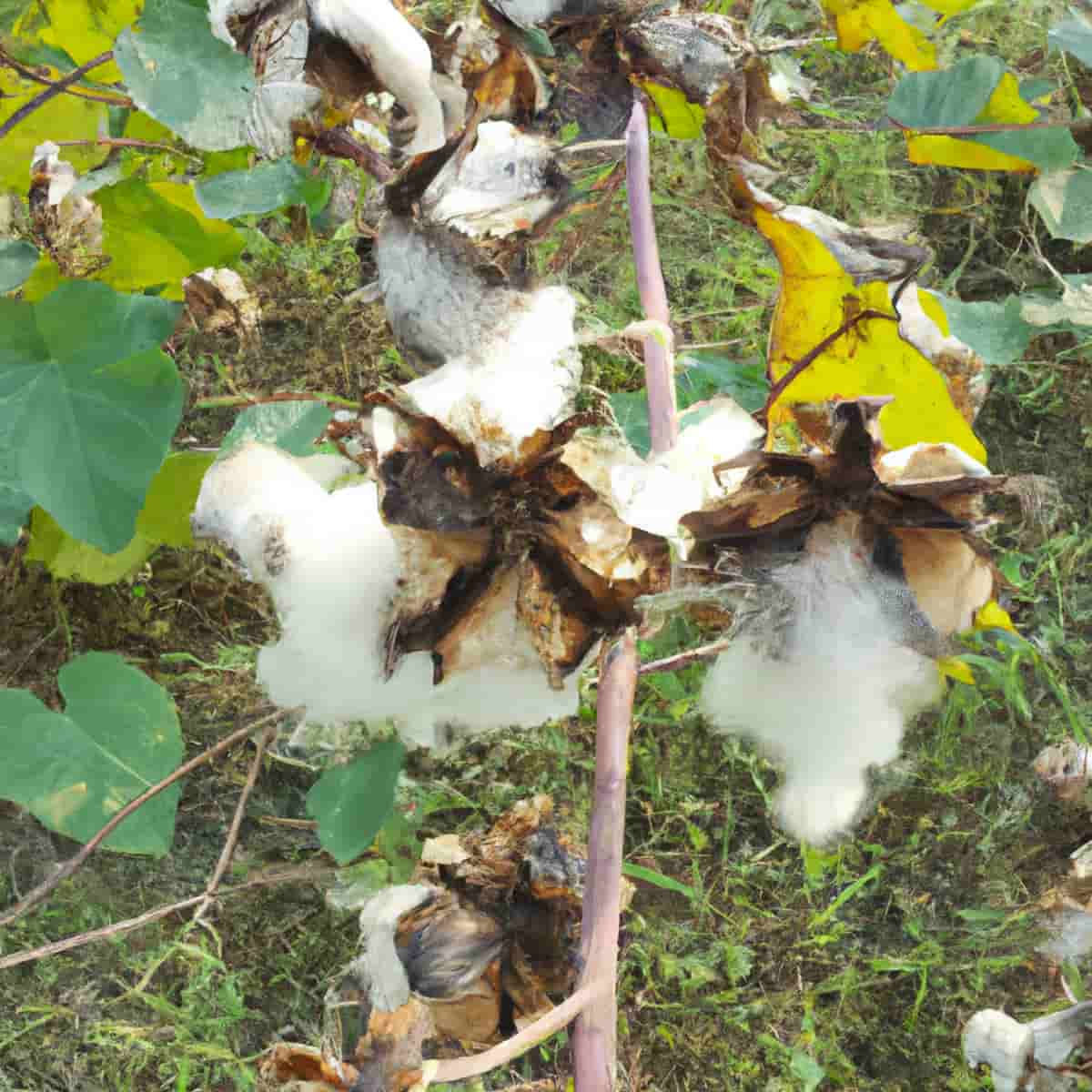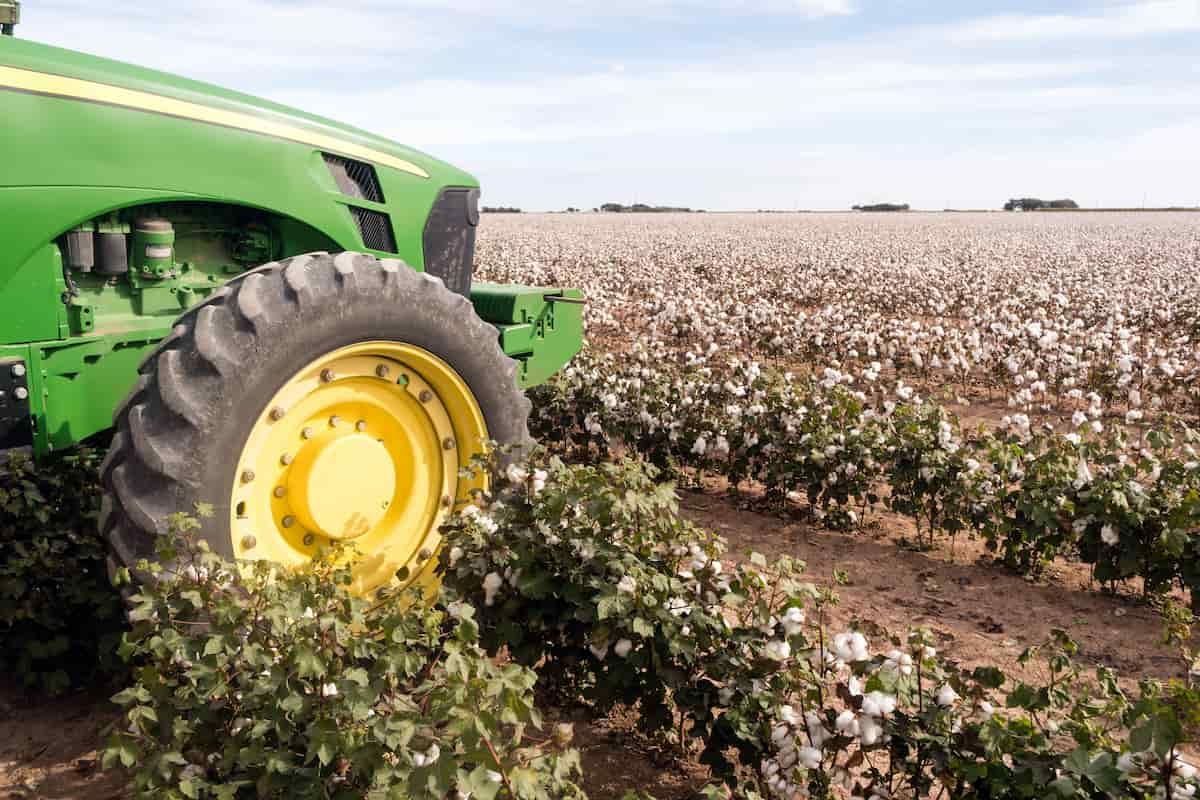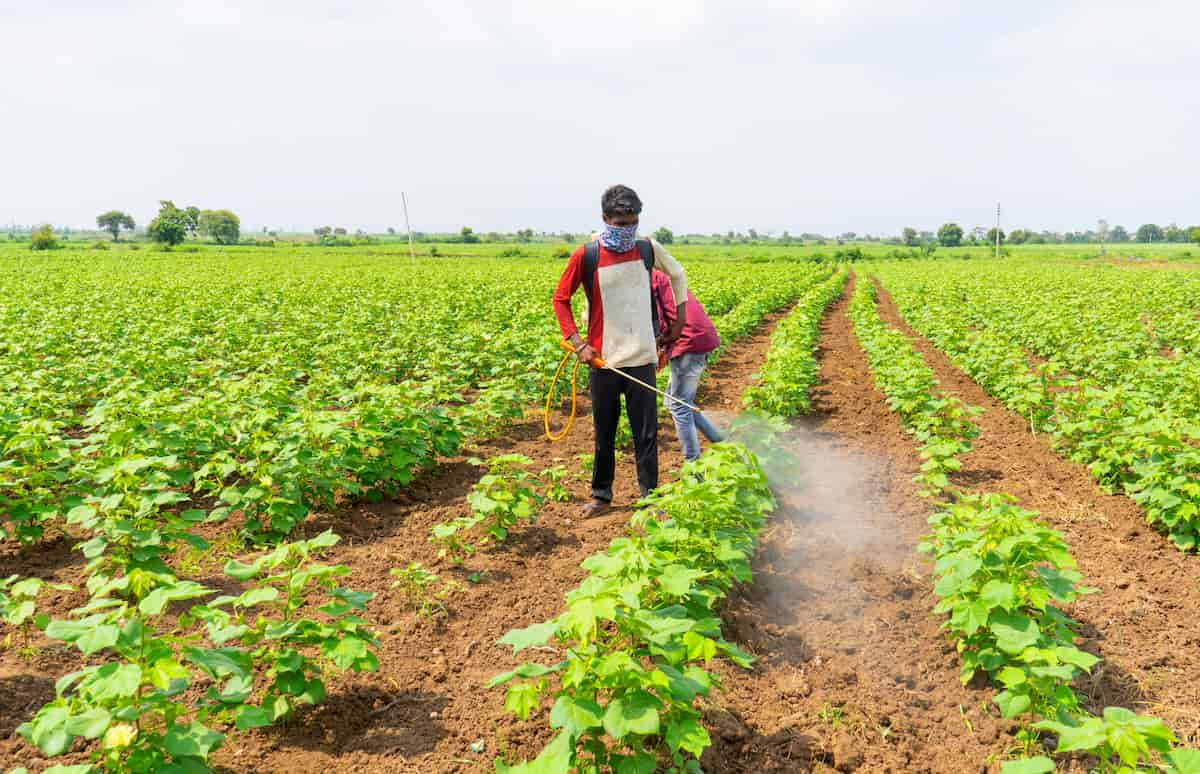The fungus Verticillium dahliae causes Verticillium wilt, a soil-borne disease. It has the potential to harm a wide range of plant species, including deciduous trees, flowers, berries, and vegetables. Fungicides will not cure the condition. Thus, prevention is essential. The disease’s diagnosis can be difficult since the symptoms change between plant species and might be confused with other causes such as drought, fusarium wilt, root rot, or excessive soil moisture. Verticillium disease affects many plant species, including hops, Cotton, and alfalfa.

Verticillium Wilt Management in Cotton
The Causal Organism of Verticillium Wilt Disease
Verticillium wilt disease is caused by the fungus Verticillium dahliae. It produces hyaline mycelium and two types of spores: conidia (single-celled, hyaline, and spherical to oval) and microsclerotia (globose to oblong, measuring 48-120 X 26-45um). These fragments play a crucial role in the spread of the disease.
Disease Cycle of Verticillium Wilt Disease
The Verticillium wilt disease cycle in Cotton involves the fungus living as microsclerotia in diseased plant waste and soil for up to 14 years. The fungus can infect crops, including brinjal, bhendi, chili, and tobacco. The disease spreads in two ways: primary spread via soil microsclerotia or conidia and secondary spread by interacting infected roots with healthy ones, as well as dispersion of infected plant parts via irrigation water and agricultural instruments. Furthermore, the illness can spread through seeds that have microsclerotia and conidia on their fuzz.
Favorable Conditions for the Spread of Verticillium Wilt Disease
Specific circumstances, such as low temperatures of 15-20°C, low-lying and poorly drained soils, heavy soils with an alkaline response, and high nitrogenous fertilizer application, promote the spread of Verticillium wilt disease. These factors generate an environment that promotes the growth and spread of the pathogenic fungus Verticillium dahliae. Growers and agricultural practitioners can reduce the danger of disease formation and spread in their crops by recognizing the favorable circumstances for the spread of Verticillium wilt.
In case you missed it: Pink Bollworm Management in Cotton: Symptoms, Treatment, Chemical, Biological, Natural, and Organic Control

Symptoms of Verticillium Wilt Disease in Cotton
- Stunted growth: Early-stage infected plants show severe stunting.
- Bronzing of veins: The first visible symptom is the bronzing of the veins on the leaves.
- Interveinal chlorosis: This is followed by the yellowing of the leaves, especially between the veins.
- Scorched appearance: The leaves dry up and give a scorched appearance.
- Tiger stripe or Tiger claw appearance: A characteristic diagnostic feature is drying the leaf margins and areas between veins, giving a “Tiger stripe” or “Tiger claw” appearance.
- Falling of leaves: The infected leaves fall off, leaving the branches barren.
- Pinkish discoloration: When the infected stem and roots are split open, a pinkish discoloration of the woody tissue can be seen.
- Longitudinal streaks: The discoloration may taper off into longitudinal streaks in the upper parts and branches.
- Brown spots on petioles: The infected leaves also show brown spots at the end of the petioles.
- Smaller bolls with immature lint: The infected plants may bear a few smaller bolls with immature lint.
Mode of Spread/ Impact of Verticillium Wilt Disease In Cotton
When no hosts are available, the fungus may thrive in soil on crop debris and penetrate the plant through rootlets or lesions in the bark. The fungus develops fast inside the plant, obstructing the movement of water and nutrients, causing withering and destruction of the aerial portions (leaves and stems). Warm, sunny weather exacerbates the condition. The fungus colonizes dead tissue and produces black formations visible under a magnifying lens as the disease advances. The fungus may live in soil for several years and spread by contaminated soil, infected seed, or root-to-root contact.
Verticillium Wilt Disease Management In Cotton by Cultural Methods
- Cultural approaches for regulating Verticillium wilt disease in Cotton include reducing the pathogen’s presence in the soil and preventing its spread to new plants.
- During the summer months, deep plowing helps mix the soil and integrate contaminated plant waste, which can be collected and destroyed.
- Rotating crops reduces the pathogen’s food source and, as a result, the pathogen’s population over time. Growing disease-resistant cotton types can also help to reduce the disease’s impact.
Verticillium Wilt Disease Management in Cotton by Biological Methods
Using biological approaches, bio fungicides based on Streptomyces lydicus can limit fungal development and manage Verticillium wilt disease in Cotton.
Verticillium Wilt Disease Management in Cotton by Chemical Methods
- Use an integrated approach with preventive measures and biological treatments if available.
- Once the disease affects a crop, it is difficult to eradicate.
- Soil fumigation is an effective but expensive control method.
- The effectiveness of soil fumigation depends on the chemicals used, the rate, and environmental conditions.
- Treatment of affected plant parts is also an option.
- Carboxin or Carbendazim at 2 g/kg should be applied to the delinted seedlings.
- Drench in 0.05g/l benomyl or 500mg/l Carbendazim.
In case you missed it: Spotted Bollworms Management in Cotton: Symptoms, Treatment, Chemical, Biological, Natural, and Organic Control

Verticillium Wilt Disease Management in Cotton by Natural/ Organic Methods
Farmers can use 100 tonnes of compost or farmyard manure per hectare to address this disease using natural and organic approaches. This approach improves soil health and fertility, which reduces the occurrence and severity of Verticillium wilt. Compost or manure serves as a natural supply of nutrients and organic matter, promoting the growth of beneficial soil microbes that aid in suppressing disease-causing pathogens.
Preventive Measures to Control Verticillium Wilt Disease in Cotton
- Utilize disease-resistant or tolerant plant types.
- Planting sensitive intercrops that might spread the illness should be avoided.
- Excessive water and nitrogen-rich fertilizers should be avoided.
- To avoid infection, fortify plants using plant fortifiers.
- Infected plant material should be cut, removed, and burned.
- After handling sick plants, clean all tools and equipment.
- When the foliage is moist, avoid working in the fields.
- Handle roots with care to avoid harm while working.
- Allow soil to be exposed to sunshine for a long time (solarization).
- Plant debris should be removed and buried deep in the soil, or it should be burned.
- To avoid disease transmission, rotate crops with non-host plants.
Conclusion
Treatment of cotton verticillium wilt disease requires a diverse approach. The illness’s symptoms are weakness, yellowing, and stunted development of cotton plants. Chemical, biological, natural, and organic treatment approaches are available. Fungicides are used in chemical treatments, whereas beneficial microorganisms are used in biological ones. Compost and farmyard manure is used in natural and organic processes. To attain the best outcomes, effective control of Verticillium wilt disease necessitates a mix of these strategies.
- Beneficial Insects in Pest Management
- Natural Solutions for Pest Control in Flower Gardens
- Types of Fungicides Used in Agriculture
- Common Issues in the Fruit Development Stage of Pomegranate Farming
- Fruit Development Issues in Papaya: Easy Solutions and Treatment
- Soil-Borne Diseases and How to Protect Your Plants
- Practices to Prevent Disease Spread in the Garden
- From Wilted to Thriving: How to Treat Root Rot Naturally in Houseplants
- Natural Remedies to Cure Brown Spots on Fig Tree Leaves